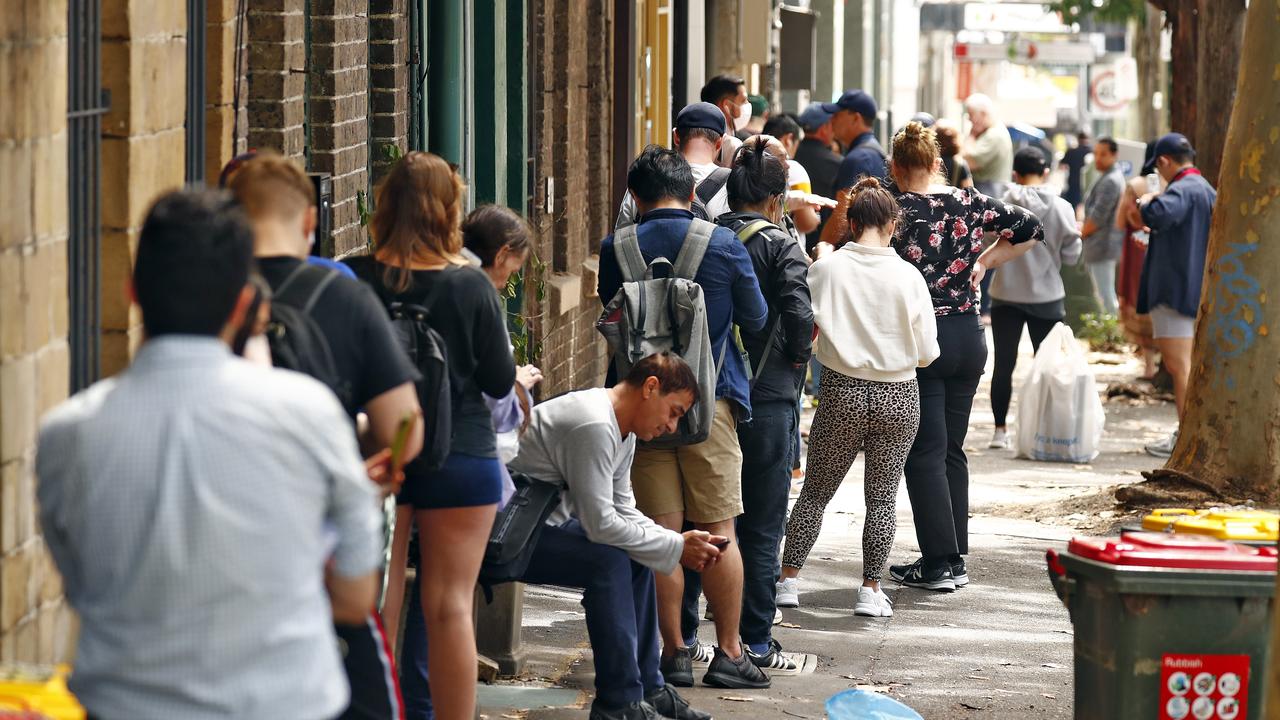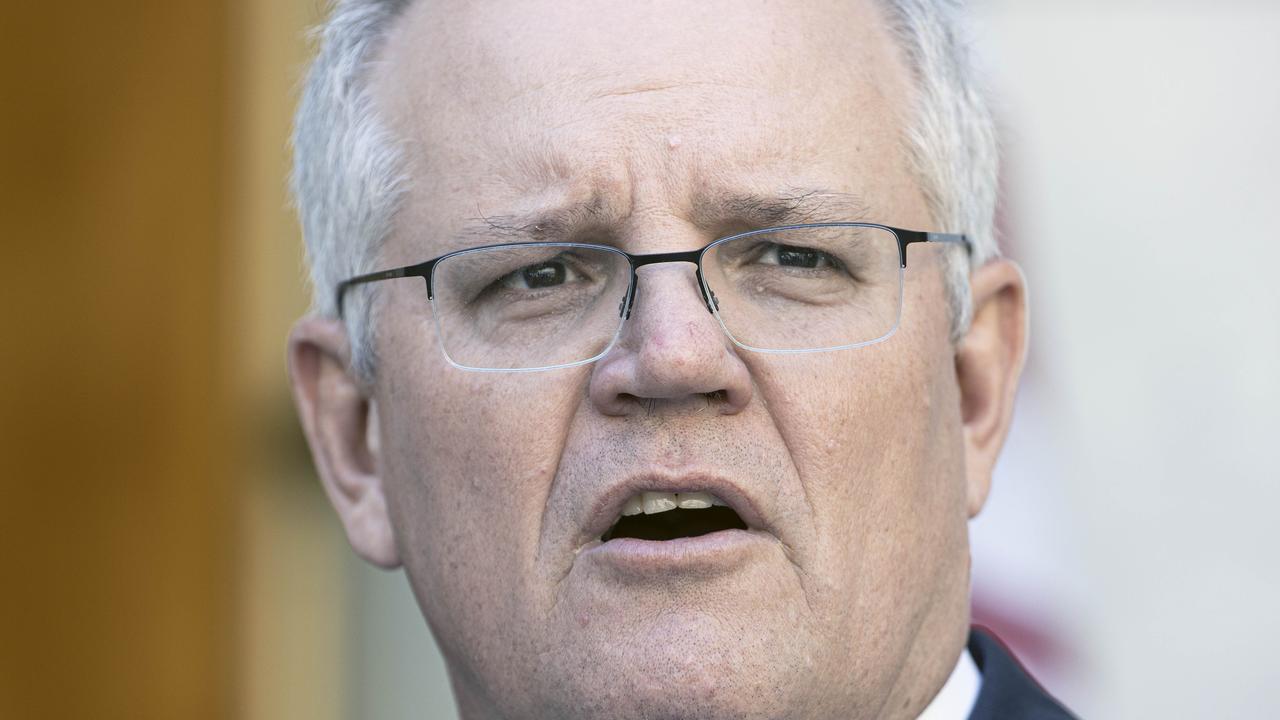JobSeeker changes, loan deferrals creates uncertainty for Australia’s economy
JobKeeper’s been slashed and mortgage holders are “ghosting” their bankers to the tune of $30 billion. What’s next for our crumbling economy?
When the coronavirus crisis began to hit businesses and households in late March, Prime Minister Scott Morrison pledged to “freeze” the nation’s economy as it stood on the day. Between loan deferrals, JobKeeper and the insolvency moratorium, the Morrison Government has in many ways done just that.
But now, as the economy begins to emerge from its six months in the deep freeze and we assess the situation in front of us, the road ahead appears to be just as uncertain as the months that are now behind us.
The range between the estimates from various economic experts has exploded to the point where you might be better off making your projections by throwing darts randomly at the board. Yet, despite the growing gulf between the different forecasts of experts, at times the data still finds a way to frustrate expectations and prove entire panels wrong.
Our economy is in many ways, flying blind into an uncertain future.
RELATED: Double dip danger could spell disaster

On Monday, JobKeeper eligibility concluded for approximately 1.3 million people, who now face a nervous wait to find out if they are among the up to 400,000 workers who Treasury estimates may lose their job before Christmas.
If Treasury’s forecasts of around 30 per cent of former JobKeeper recipients losing their jobs are indeed correct, it raises a concerning question. Could up to 660,000 of the remaining 2.2 million JobKeeper recipients lose their jobs when the program is modified further in December and concludes at the end of March?
If the current estimates are correct, it’s certainly possible, but the truth is we don’t know.
And that’s the problem.
From the number of mortgage holders who may not be able to resume their deferred loan payments, to the number of businesses who may go bust when the insolvency moratorium concludes, what we generally have are best guesses.
For example, estimates of the number of businesses that may close their doors vary widely.
The Australian Bureau of Statistics (ABS) estimated that approximately 10 per cent of businesses – or around 240,000 – could be forced to close their doors.
However, a survey of business owners by research firm Digital Finance Analytics (DFA) painted a very different picture. Around 25 per cent of business owners stated that they did not expect to be trading in six months’ time, representing up to 600,000 businesses potentially closing for the final time.
Which estimate will prove closest to the mark remains to be seen. But with government intervention and the economic situation constantly evolving, things may look very different in just a few short months.
RELATED: When Australia’s real pain will start

According to the latest data from banking regulator APRA, approximately $229 billion worth of loans are currently being deferred. With roughly 1 in 11 mortgages and 1 in 6 small business loans also in deferral, a huge number of Australians are reliant on the generosity of their lender.
It’s estimated that approximately 20 per cent of the 414,430 deferred home loan holders are now “ghosting their bankers”, by simply choosing not to respond to their bank’s various attempts to contact them by phone, mail, text or email.
With around 80,000 borrowers owing approximately $30 billion now not reachable by their banks, this represents an increasingly concerning issue for the financial system and the housing market.
How many business owners and mortgage holders will resume their repayments when their deferral period ends remains a hotly debated question. But with JobKeeper scheduled to conclude at the same time as mortgage deferrals in March next year, there are fears a wave of defaults and forced sales may occur.
After six months of deferred or forgiven rents and eviction moratoriums during the
coronavirus pandemic, it’s a similar story in the nation’s rental markets.
Except unlike mortgage deferrals where the terms were very clearly established, residential rental forgiveness and/or deferrals were generally much more ambiguously defined at the peak of the crisis.
For many tenants who deferred payments, they are now coming due – and for landlords, the wait without any rent may continue until March next year in some states, after eviction moratoriums were extended.
According to Digital Finance Analytics, 41 per cent of renting households are in financial stress, along with 25 per cent of property investors.
Determining how many tenants may end up being evicted and landlords may be forced to sell their properties is challenging, and this area remains a significant blind spot for the economy as the support measures continue to expire.
The forecasts and modelling we do have for these various indicators of the nation’s economic health vary widely, from the cautiously optimistic to downright disastrous. But in some areas we lack the projections and clarity required for policy makers and households to be able to make the best possible decisions.
RELATED: Savage change in Aussie housing market

As this year defined by uncertainty continues to unfold, Australia is now flying blind into the worst economic storm to hit our great Southern land in almost a century.
How things will play out for households and the economy more broadly is shrouded in the fog of ongoing crisis, as the economy begins to stand on its own two feet for the first time since March.
No one can truly say they know what is to come, but with over 5.1 million Australians reliant on either JobKeeper or JobSeeker, a whole lot needs to go right for the optimistic scenarios to be realised.
Ultimately, as government support continues to be removed, Australia is edging closer to dark clouds on the horizon and no one can truly say they know what awaits.
Tarric Brooker is a freelance journalist and social commentator | @AvidCommentator



